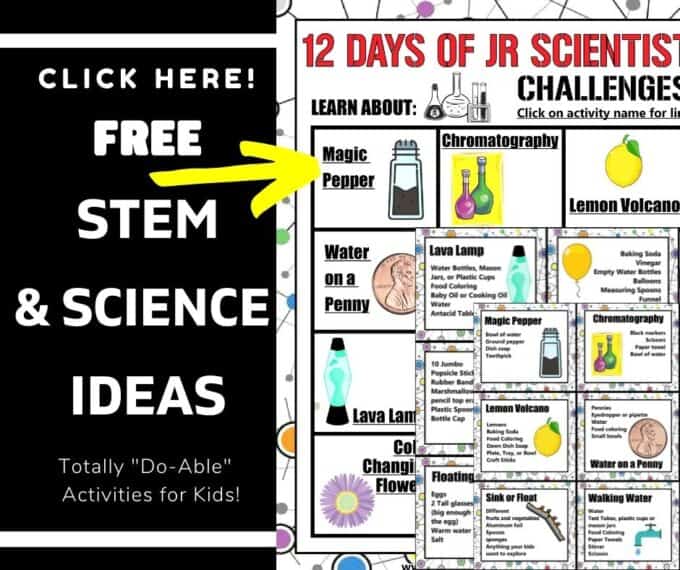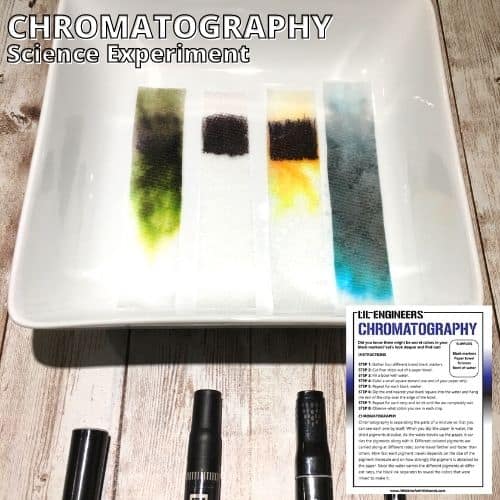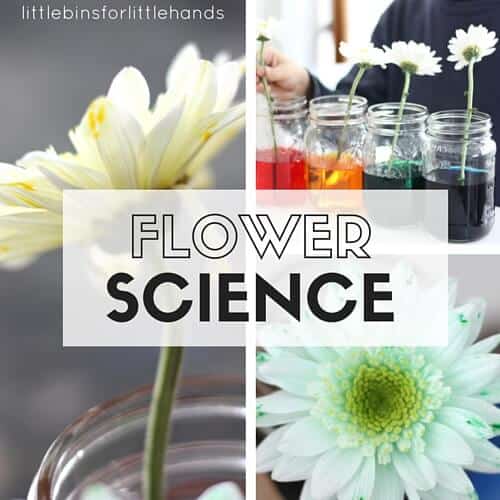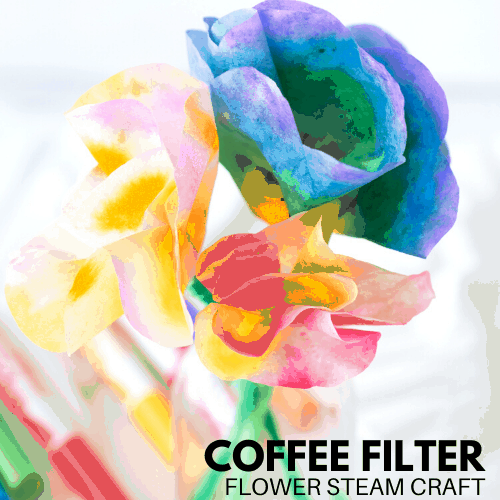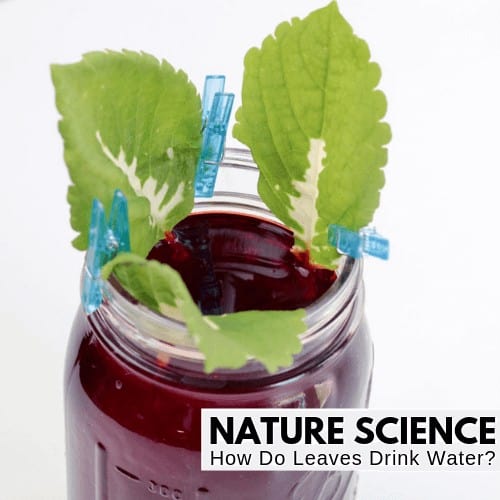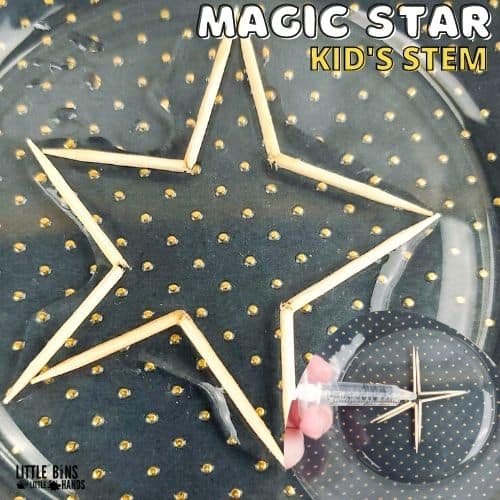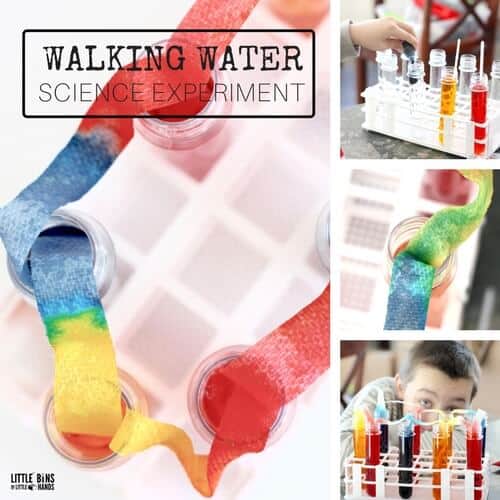Capillary action is an exciting part of science and can be hands-on and engaging for kids. Learn what capillary action is with our simple definition below. Check out these fun science experiments demonstrating capillary action to try at home or in the classroom. As always, you’ll find fantastic and easy to do science experiments at the tip of your fingers.
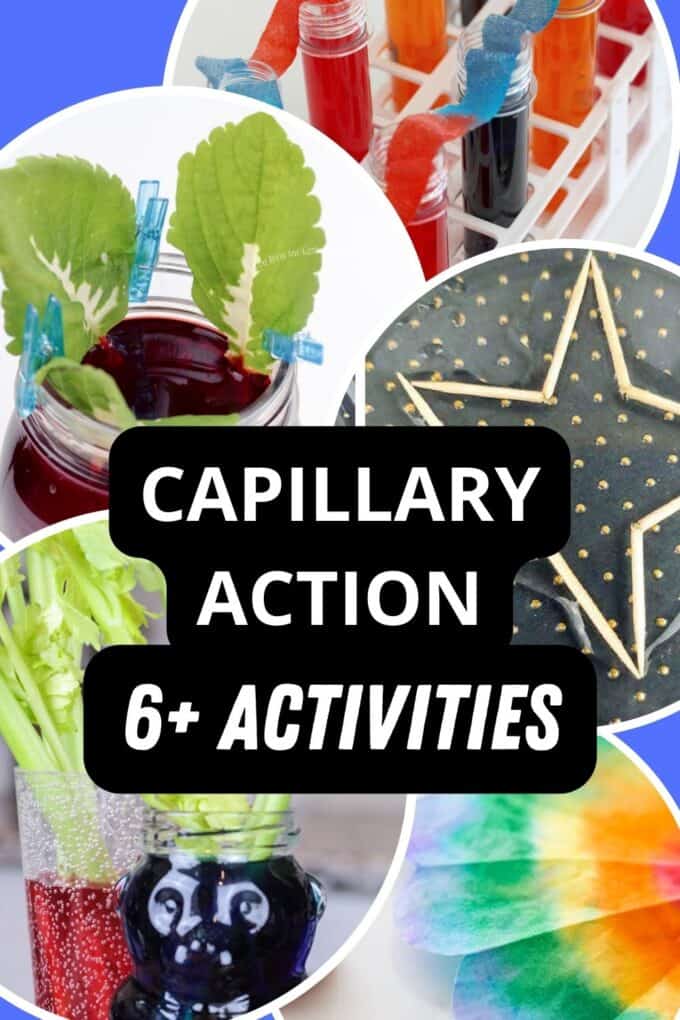
Some of our most enjoyed science experiments have also been the simplest ones! Science doesn’t need to be complicated or expensive to set up, especially for our Junior Scientists.
Introduce new concepts like capillary action with fun, hands-on science experiments, and easy to understand definitions and science information. When it comes to science learning for kids, our motto is the simpler the better!
What Is Capillary Action?
Here is a simple capillary action definition to share with kids. Capillary action is the ability of a liquid to flow in narrow spaces without the help of an outside force, like gravity.
Try This: Capillary action looks a bit like magic! Imagine you have a tiny straw, so tiny that you can’t even see it. Now, dip one end of the straw into a glass of water. What do you think will happen? The water inside the straw starts to climb up all by itself.
This happens because of a special force that water has called ‘capillary action.’ It’s like water’s secret ability to climb up things. The water molecules love to stick together and stick to other things, like the walls of the tiny straw. These sticky forces pull the water up!
You can see capillary action when you look at a piece of tissue or paper towel dipped in water. The water seems to travel up the paper, making it wet.
Plants and trees couldn’t survive without capillary action. Think about how tall trees can move a lot of water so far up to their leaves without a pump of any kind. It also helps our bodies by moving water through tiny blood vessels.
How Does Capillary Action Work?
What is the physics behind capillary action? Capillary action happens because of several forces at work. This includes the forces of adhesion (water molecules are attracted and stick to other substances), cohesion, and surface tension (water molecules like to stay close together).
Capillary action of water happens when the adhesion to the walls is stronger than the cohesive forces between the water molecules.
What is capillary action in biology? Capillary attraction in plants happens when water travels through the roots and narrow tubes in the stem before moving to the leaves. As water evaporates from the leaves (called transpiration), it pulls more water up to replace what has been lost.
Also, learn about the surface tension of water!
Below you will find several excellent capillary action examples at work, some using plants and some not.
What is the scientific method?
The scientific method is a process or method of research. A problem is identified, information about the problem is gathered, a hypothesis or question is formulated from the information, and the hypothesis is put to the test with an experiment to prove or disprove its validity. Sounds heavy…
What in the world does that mean?!? The scientific method should be used as a guide to help lead the process.
Read more about the Scientific Method here with free printables.
You don’t need to try and solve the world’s biggest science questions! The scientific method is all about studying and learning things right around you.
As kids develop practices that involve creating, gathering data evaluating, analyzing, and communicating, they can apply these critical thinking skills to any situation. Click here to learn more about the scientific method and how to use it.
Even though the scientific method feels like it is just for big kids…
This method can be used with kids of all ages! Have a casual conversation with younger kiddos or do a more formal notebook entry with older kiddos!
Free printable science experiments pack!
Capillary Action Examples
Here are some fun ways to demonstrate capillary action. Plus, all you need is a handful of common household supplies. Let’s play with science today!
Celery Experiment
There’s nothing better than science in the kitchen! Set up a celery experiment with food coloring to show how water travels through a plant. Perfect for kids of all ages!
Chromatography
The uptake of water in paper using markers is a fun and simple way to explore an example of capillary action.
Color Changing Flowers
Grab some white flowers and watch them change color to demonstrate capillary attraction in plants. We also did a green version of this experiment for St Patrick’s Day.
Coffee Filter Flowers
Explore the colorful world of STEAM with these coffee filter flowers. Here’s an alternative way to make coffee filter flowers too!
Leaf Veins
Collect some fresh leaves and observe over a week how water travels through the leaf veins.
Toothpick Stars
Here’s a great example of capillary action that doesn’t use plants. Make a star out of broken toothpicks by only adding water. It all happens because of the forces in capillary action.
Walking Water
Explore the capillary action of water with this classic science experiment. Walking water is a colorful and easy-to-set-up science experiment that moves water through paper towels via capillary action.
Water Absorption
A simple water experiment for younger kiddos. Add colored water to cotton pads and observe how they absorb the water through capillary action.
Printable Science Projects For Kids
If you’re looking to grab all of our printable science projects in one convenient place plus exclusive worksheets and bonuses like a STEAM Project pack, our Science Project Pack is what you need! Over 300+ Pages!
- 90+ classic science activities with journal pages, supply lists, set up and process, and science information. NEW! Activity-specific observation pages!
- Best science practices posters and our original science method process folders for extra alternatives!
- Be a Collector activities pack introduces kids to the world of making collections through the eyes of a scientist. What will they collect first?
- Know the Words Science vocabulary pack includes flashcards, crosswords, and word searches that illuminate keywords in the experiments!
- My science journal writing prompts explore what it means to be a scientist!!
- Bonus STEAM Project Pack: Art meets science with doable projects!
- Bonus Quick Grab Packs for Biology, Earth Science, Chemistry, and Physics



